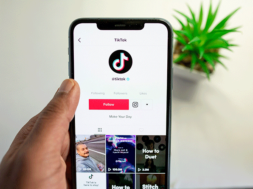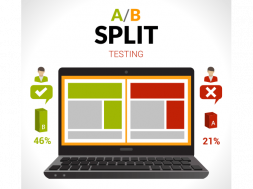
By Laura Rees, Director or Brand & Marketing, Cyanna Education Services
Your website is one of the most important ways you advertise to potential students. Often, it’s the first (and sometimes the only) point of contact for individuals considering your school. That makes it absolutely critical that your site is working as hard as it can to help you recruit students.
Of course when you’re thinking about evolving your site, it can be difficult to know where to start. Fortunately most of the things you’ll need to evaluate can be broken down into four big steps.
STEP 1: Know your audience.
Who are they?
You’re talking to a lot of people with your site: potential students and their families, current students and families, alumni, even you and your colleagues. List out all your audiences, and then rank them in order. Who’s the most important? For most schools, that’s going to be the prospective student (and his or her family). Think hard about exactly who this prospective student is. Don’t say “anybody.” You know there are some people that perform more successfully at your institution than others. What are the characteristics of those people? Do they fall within a certain age range? Have specific personality traits? Come from a certain geography or even engage in a common activity?
Once you determine who this ideal individual is (called a “customer profile” or “persona” in marketing speak), you have a focus for who your site should appeal to. Use this as a filter for every decision you make.
Where are they accessing your site?
No matter what your customer profile looks like, your site needs to be responsive. You may also hear people call it “optimized for mobile” or “mobile friendly.” A responsive site is one that shifts and responds to changes in screen size. For example, if you’re viewing a website on your mobile phone, it shouldn’t just look like a tiny version of what you’d see if you were looking at it on a laptop.
Making your site responsive is more important than ever for two reasons:
- In April of 2015, Google changed its algorithm to give priority to websites that display well on smartphones and other mobile devices. In other words, if your site isn’t responsive, it isn’t ranking as highly in Google search results as it could be.
- More than 50 percent of all online traffic is coming from mobile devices, and that percentage is projected to increase. When a potential student hits your site on his iPhone, and it’s not responsive, you look dated, information is hard to find, and the student more than likely goes elsewhere.
In addition, don’t limit your Web presence to just your website. Are you on Facebook, Twitter, Instagram, or other social platforms? You may not need to be, but it’s definitely a consideration. These are places that allow you to showcase content that changes often, like events and timely announcements, without having to update your main site. The more you can engage in multiple ways, on multiple platforms the higher the chance you have of catching the eye of potential students.
STEP 2: Review what your audience needs to know.
If step one is all about knowing who your audience is and how they interact with technology, step two is thinking about the actual things they need to know. What kind of information are they looking for?
Chances are you already have a good idea of what people need to know: things like what types of programs you offer, when classes are offered, what kind of career placement support you offer. Consider both what your audience is looking for and also what you wish they knew. What do people call to ask about? What topics get social media engagement? What are common problems potential students have? What actions do you want people to take? This is the content that should be front and center.
Take stock of what’s on your current site.
After you have a good idea of important information, take a hard look at your site right now, and assess what’s there. There might be quite a lot of content, especially if you haven’t updated things in a while, or if your site has been up for a long time. Start to think about what might not be necessary.
There’s likely to be a lot of good stuff that you want to keep, too. For that information, ask yourself “is this easy to find where we have it right now? Should it be in a more prominent location?” Start to identify information that might need to be reorganized.
List the actions you want users to take.
Take the time to define what you want potential students to do once they’re on your site. Is it to apply? To schedule a meeting with an admissions counselor? To come for a visit?
List the top things you want your audience to do, and prioritize them.
STEP 3: Consider how to deliver.
Now that you know what content you have, what people are looking for, and what you want them to do, think about how best to get them relevant information and inspire the actions you desire.
Cut information that’s dated, unnecessary, or redundant.
This one’s a no brainer. Clean house and get rid of any content that doesn’t meet your audience’s needs. Use as few pages and as few words as you can to communicate what you need to. Peoples’ attention spans are shrinking. Don’t lose them by overstating things.
Remember that content doesn’t have to be just words.
Photographs, videos, infographics, and charts can all do the same work, if not more, as paragraphs of content. And since people are used to talking in icons and emoji’s, graphic communication is actually preferred.
Break up large chunks of content with headlines and bullets.
Sometimes you will just have to have a lot of copy. Do what you can to make it easy to scan by adding headlines, subheads, bullets, and numbers.
Make it clear what you want your audience to do.
Revisit those actions you defined back in Step 2. Now make sure they come through loud and clear on your site. If you want people to apply, put “Apply today” in a prominent space on every page. If you want people to schedule a visit, make “Schedule a visit” the first thing you see when you go to the site.
And remember, these appeals to act don’t have to feel like used car salesman lines. Make them part of your site design in a tasteful way.
Integrate functions that make the site easier to use, like search and forms.
Think about ways to help your users find things. Add a search function so they can look for exactly what they want without having to figure out where it might be located on the site. Add contact or sign up forms that make it simple to get in touch with you.
STEP 4: Make it easy on yourself
Your first priority should be making things easy for your audiences. But taking a load off yourself should be a close second. Are there things you can do to make your site easier to administer?
Automate what you can.
Instead of manually processing leads or applications, consider investing in a system to manage them electronically. The price can initially seem daunting, but weigh it against the increase in your productivity. If it gives you time to reach even 10 more students a week, isn’t it worth it?
Find an easy way to manage your content.
Things change and evolve, and the information on your website should, too. That means you need to have access to make changes. Are you controlling content yourself? If not, is it possible for you to move to a content management system to make things easier?
A content management system, if you’re not familiar, is an application that allows you to easily change and add content using a common user interface. It lets you make adjustments to your site without having to learn how to code. Some of the most common are WordPress, Drupal, and Joomla, although there are many options available.
Know how much you can handle.
It would be nice to have the time to update your site, your Facebook page, and your Twitter feed, then post a new photograph to Instagram and Tumblr, and even add a Snap to your Snapchat Story – all on a daily basis. But let’s get real. Most of us just won’t be able to get to all that.
Be honest with yourself (and your boss) about what you have time for. Pick the platforms that will have the most impact with your audience, and focus your time there.
You can also consider recruiting some help with social. Many schools do “student takeovers” of social accounts on a weekly basis. This is a great way to not only alleviate yourself of some of the work, but it also gives audiences insight into the real experience of students. And let’s face it, they’re usually better at using social than most of us anyways.
And if all this seems overwhelming, remember that you can approach your website in a variety of ways. You don’t have to start with a complete overhaul. You could use the steps above to figure out a few small tasks to start with and work from there. And you don’t have to do everything yourself. There are any number of partners you can work with that will do everything from writing and design to building powerful back-end systems. As long as you recognize the value of your digital presence, and take action to make it better, you’ll be moving toward a more effective recruiting process.
Laura Rees is a creative director with over 15 years of experience in brand and marketing. With a background in copywriting, she’s helped clients large and small talk with their audiences in compelling ways.
Contact Information: Laura Rees // Director of Brand & Marketing // Cyanna Education Services // 614-571-5063 // laura.rees@cyanna.com // linkedin.com/in/laurarees











